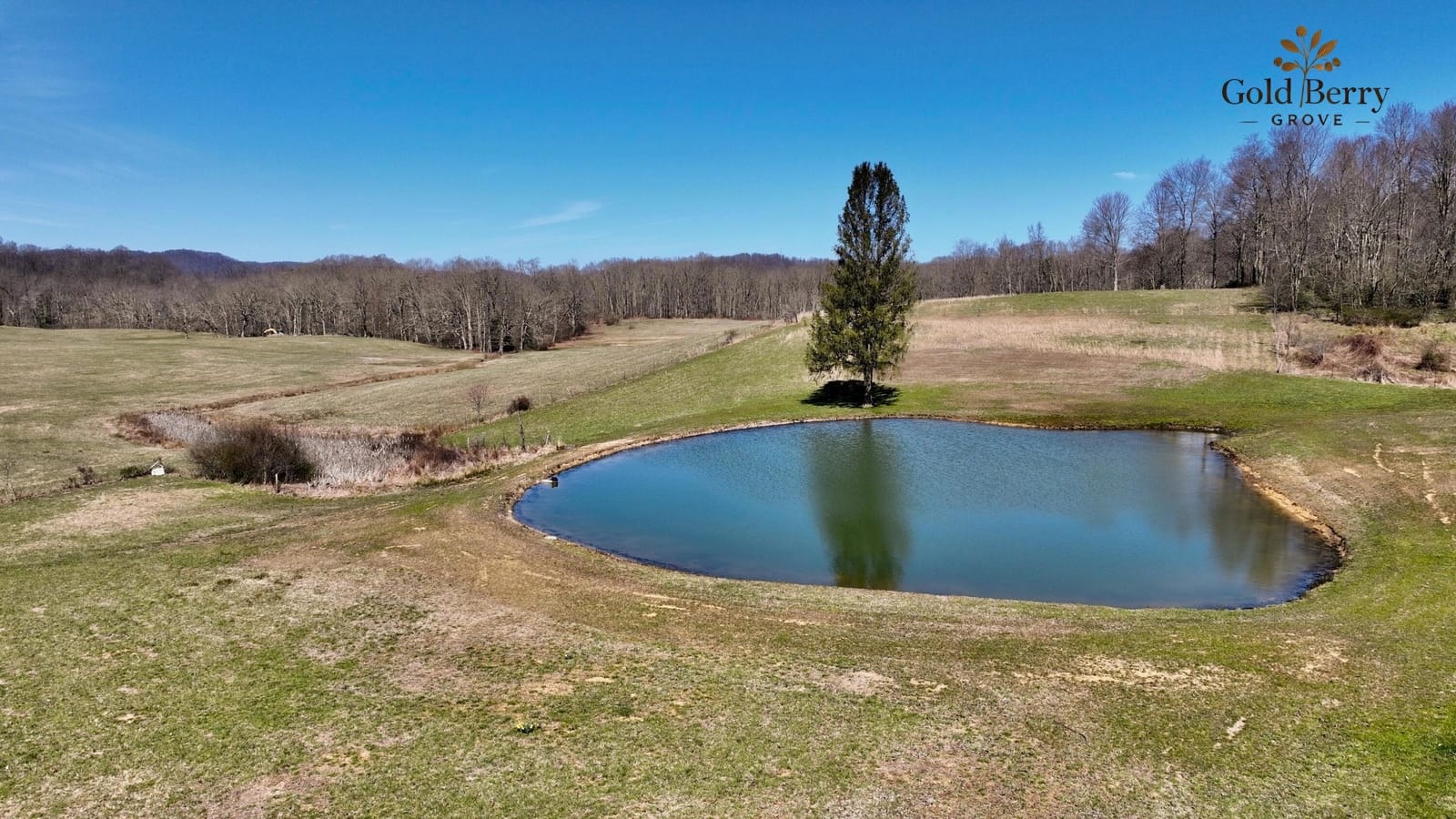Planning My Pollinator Plots: A Farmwide Approach to Habitat and Biodiversity

At Goldberry Grove, we’re working to build not just a farm, but a sanctuary—one that supports a variety of pollinators, wildlife, and native species. As part of our regenerative approach, pollinator plots are integral to our farm's ecosystem. They’re not only beautiful but also critical to the health and productivity of our orchard and the wider farm. Here’s how I’m planning and designing these spaces to support pollinators, birds, bats, and the full spectrum of native wildlife.
Wildflower Strips in the Fields
One of the simplest but most effective ways to support pollinators is by keeping strips of wildflowers alive in our fields. These strips act as corridors for bees, butterflies, and other essential pollinators, offering them a constant source of nectar and pollen throughout the growing season. By keeping these strips within the fields, I’m also providing a refuge for pollinators in between the crop rows. These wildflower strips not only help with pollination but also contribute to soil health by attracting beneficial insects and providing ground cover that prevents erosion.
The idea is to make the strips diverse and perennial, incorporating flowers like clover, coneflowers, and black-eyed Susans. These are hardy plants that thrive in the Appalachian climate and will continue to bloom year after year, giving our pollinators a steady food source without the need for constant replanting.
Natives Around the Wetlands
Another key part of our pollinator strategy is planting native species around our wetlands. Our farm’s wetlands are an important part of the ecosystem, and we’re working to make them even more functional by surrounding them with native trees and shrubs. These plants do more than just look good—they help maintain the delicate balance of the wetland ecosystem, support wildlife, and provide additional habitat for pollinators and other animals. A great resource that I've been utilizing is this booklet.
I’m focusing on planting species that naturally thrive in our wetlands and will serve multiple purposes. Willow is a standout for its ability to grow quickly, support erosion control, and provide habitat for insects and birds. Red maples are fantastic for creating a windbreak along the wetland edges, offering shelter for both animals and crops. Dogwoods are a perfect choice for their aesthetic value, bird-friendly fruit, and their ability to handle wet soils. Elderberry is another key player, providing nectar for pollinators and berries for wildlife. Finally, Arundinaria gigantea, or giant cane, will help provide additional structure for wetland habitats, creating shelter for small mammals and amphibians.
Supporting Bats, Birds, and Native Animals
The beauty of a diverse ecosystem is that it supports more than just the plants. As we continue building these pollinator plots, I’m focused on attracting and supporting a variety of wildlife. Bats are crucial for controlling insect populations, and I’m excited about installing bat boxes to give them a place to roost. These nocturnal creatures are key for reducing pests like moths and mosquitoes, making them an invaluable asset on the farm.
Birds also play an important role in pollination and pest control. To attract them, I’m planting native trees that provide both shelter and food. Trees like dogwood and red maple offer berries and seeds that birds love, while also giving them perches and shelter from the elements. I’ll be adding birdhouses in strategic places to give them safe nesting spots, making sure we’re fostering a balanced environment where birds can thrive.
Native animals are also a priority for our farm’s biodiversity. I’m particularly interested in creating habitats for small mammals, amphibians, and insects. To support this, I’m working on creating a mix of deadwood habitats, such as drilling holes in standing trees. This provides homes for a range of critters, including woodpeckers, bees, and other beneficial insects. I’m also experimenting with brush piles and rock piles, which serve as shelters for small mammals and reptiles, creating a thriving food chain from the ground up.
Habitat Creation and Long-Term Vision
Looking ahead, my goal is to create a fully integrated, wildlife-friendly farm where every inch serves multiple purposes. Whether it’s pollinator strips, wetland buffers, or habitat for mammals and birds, I want Goldberry Grove to be a place where nature and agriculture coexist in harmony. Through thoughtful planning and plant selection, we’re laying the groundwork for a farm that will support not only our crops but the wider ecosystem around us.
In the coming years, I plan to expand on these habitats by installing additional features like wildlife corridors and beehives, as well as experimenting with natural pest management. The idea is to create a diverse, self-sustaining farm that’s full of life, where every bird, bat, and pollinator plays an essential role in the health of the land.
By focusing on these habitats, we’re not just farming—we’re stewarding the land in a way that promotes biodiversity, supports our crops, and benefits the entire community. That’s the essence of regenerative farming: working with nature, not against it. And as we continue to expand Goldberry Grove, we’re building a farm that supports both food production and the resilience of the ecosystem.

